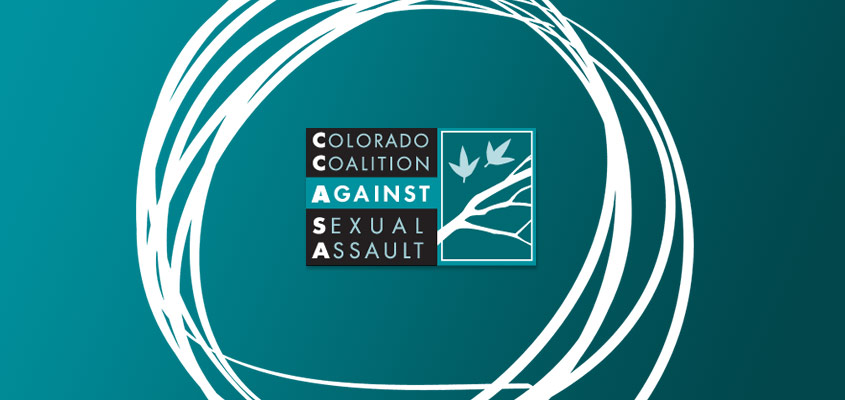By Zach Rawlings, CCASA Guest Blogger
In a past blog, I discussed three primary ways trauma can affect someone. Building on that, this blog will expand upon the explanation and understanding of trauma to include the negative cycles it creates, and not just its short-term effects. Trauma is far-reaching and cyclical, so it’s important to take some time understand these cycles and how difficult it can be to escape them.
The first cycle trauma creates is one of self-abuse. A recent study concluded that being sexually abused was one of the primary predictors of girls getting involved in the juvenile justice system. In Oregon alone, 93% of the girls in the juvenile system had been sexually or physically abused. Furthermore, this same study concluded that those juvenile systems were not equipped to handle the underlying problem of trauma. As a result, these young women who end up in the cycle of the system have little to no opportunity to address the issues that landed them there to begin with.
One young lady explained that she had fled her abusive home at a young age and met a man at the age of 10 who coerced her into selling her body for money. For the next several years, she worked as a prostitute. This particular girl’s mother was addicted to drugs and her father was in prison. Each time she was arrested for prostitution, she was made to feel by authorities that it was her fault. However, she really had no idea how else she could make money. As a result, each time she was arrested and released, she had little choice but to return to the man who was exploiting her.
Trauma that happens during childhood inscribes a very powerful message onto a kid’s developing brain. It inscribes a message that sounds something like, “You are disposable,” or “You are damaged goods.” Because the developing brain of a child is vulnerable to its environment, being abused at the hands of an adult can send an influential message that adults are abusive and untrustworthy, and that the child is disposable or worthless. The resulting emotions of believing these messages make it difficult to think highly of one ’s self and to accomplish basic life tasks in the future.
The bottom line: childhood trauma traps someone into a lifetime of self-abusive thinking and actions if not properly processed and treated. Young people who end up in the system because of childhood trauma are then less likely to be able to escape this part of the cycle because their resources go further downhill once in the system, since juvenile systems do little to reverse this cycle of self-abuse.
Secondly, trauma creates a cycle of poverty. I teach human development classes to undergraduate students at a local college in Denver. We often discuss how poverty makes humans vulnerable and can stunt one’s development. But many people do not understand the extensive role that trauma plays in an economical sense.
Consider these findings from a recent report from the Centers for Disease Control and Prevention:
- The average cost for someone who experienced abuse as a child is $210,012 over the course of his or her lifetime.
- Someone who was abused as a child on average earns $5,890 less per year than someone who was not mistreated as a child.
- Rises in unemployment are almost always followed by rises in child maltreatment cases.
- $32,648 in childhood health care costs;
- $10,530 in adult medical costs;
- $144,360 in productivity losses;
- $7,728 in child welfare costs;
- $6,747 in criminal justice costs;
- $7,999 in special education costs.
This is a lot of money and a stressful impact that childhood trauma can leave on someone’s life. Again, the bottom line is that trauma not only creates an emotional cycle, it creates a financial one as well.
Finally, trauma creates a generational cycle. That is, it can get passed down through generations. Recent research has shown that trauma effects can actually be passed down to our children biologically. The short is this: trauma impacts the production of our short RNA molecules. When that happens, our normal cellular processes get messed up too, and when this occurs, our emotions and reactions do not necessarily function as they should. Essentially, these abnormal short RNA molecules can then be transmitted to our offspring for up to three generations!
Furthermore, trauma survivors can unknowingly pass down social effects of their trauma to their children. Typically those who have experienced something traumatic can begin to operate from a belief that the world is unsafe. This belief can easily be transferred to children through how a parent interacts with his or her child. Overprotection, coddling, catastrophizing, or not allowing the child to individuate from the parent are all behaviors from a parent that can communicate the belief that “the world is unsafe,” even if the child has not experienced something traumatic firsthand. Soon the child’s brain may begin interacting with the world more fearfully and with more hyper vigilance than is good or necessary.
Trauma is not an innocent thing that just happens to people. It is serious and should not be minimized. Too often we think the bad things that happen to us are simply part of living. Although it is true that trauma can be an unfortunate part of life, it’s important to pay attention to the way that traumatic events change and shape us. Trauma can often throw us into cycles that leave us feeling disheartened and hopeless, or searching for an escape. If something has happened to you that you can’t stop thinking about, that’s usually an indicator that you would benefit from some assistance to get back on track with a clearer mind. Trauma cycles can be pervasive and combatting them often takes a lot of work and energy on the behalf of the survivor. If you find yourself caught in one or all of these cycles, feel free to reach out by visiting me at my website. I’d love to help you get back on track.
Image Credit: https://drscdn.500px.org/photo/13126761/m%3D2048/99e4900ef242958fd6bef006b05d6e21

